Aldo Eluisi was a Roman anarchist anti-fascist, of Venetian origin, hero of the First World War and of the Resistenza, the Italian resistance against Nazism and Fascism. Arrested and tortured by the Nazi jailers, he did not reveal anything of what he knew about the organization of Resistenza groups. On March 24th, 1944 he was murdered at the Fosse Ardeatine, at the age of 45, one of the 335 martyrs. In the same year 1944 he was posthumously awarded the gold medal for valor.
Life
Aldo was born in Venice
on September 11th, 1898 to Romolo and Pasqua Marchetti,
and at the age of three years he moved with his family to Rome
in piazza Fiammetta, at Tor
di Nona, in the rione (district) Ponte, two hundred meters from
Piazza Navona, but at the time of his death he was resident in
32, via San Tommaso d'Aquino, in the Trionfale district. He was
a construction painter, by different sources his job was defined
as colourist, varnisher, or painter. The definition of Aldo as
an "artist" probably comes from an erroneous interpretation
of the term "pittore", which in Italian means
"painter" (the artist), but in Rome's dialect is also
used to define a construction painter.
Aldo took part in the First World War as a volunteer, in assault
troops, then he joined the Arditi ("the daring ones"),
a schock elite corps, and in 1917, in the period of Caporetto
defeat he was committed in particularly daring actions, thence
he received a mention in dispatches, and a bronze medal for valor.
After being discharged, as Corporal, in 1919, he was one of the
legionnaires (see his membership
card), who performed the Impresa di Fiume ("Rijeka Endeavour"),
the occupation of the Istrian city of Fiume/Rijeka by Italian
nationalist militias leaded by Gabriele D'Annunzio, which ended
in January 1921.
Back in Rome, he engaged in the activity of organizing the National
Association of Arditi (ANAI - Associazione Nazionale Arditi d'Italia),
becoming one of the key figures of the Rome section of Via Germanico,
271, where in mid-April 1921 he was elected as a councilor in
the new committee of action.
When it became clear that the Arditi d'Italia were definitely
siding against workers, supporting the rising fascism, and participating
in attacks to socialist local branches and to workers' cooperatives,
Aldo, along with other Arditi, distanced himself from the association
and promoted the split of a left wing.
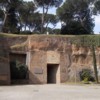
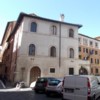
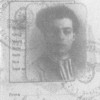
The "Arditi
del Popolo"
On July 6th,
1921 the Rome Committee of Proletarian Defense organized the "Proletarian
Day", a demonstration against fascists' violence and bullying,
to which tens of thousands of anti-fascists
took part. The rally left from the Colosseum,
then paraded along the streets of Rome City Center, among cavalry
charges and clashes with the police, and ended at the Orto
Botanico (Botanical Garden). About three thousand anti-fascist
Arditi, including Aldo, took part in the rally, and paraded armed
in close order formation. As they reached the Orto Botanico, the
foundation of the Arditi del
Popolo (People's Arditi) was made official, as an armed
corps of proletarian self-defense, under the leadership of lieutenants
Argo Secondari and Ferrari and
Sergeant Dino Pierdominici, who on June 27th
had been elected on the association's board. At the end of the
demonstration, further clashes occurred between protesters and
police, in particular at via
dei Serpenti and via degli Annibaldi,
in the rione (district) Monti (see the report on La
Stampa, in Italian).
The rally at the Orto Botanico was quoted by Lenin
as an example of the gain of the majority of the working class
by the communists, an error of assessment due to the incomplete
information the Soviet leader got. (Francescangeli)
The Arditi del Popolo
in the summer of 1921 had approximately 20,000 members (more than
3,300 of them were in Rome); they held their first congress in
Rome, at the headquarters of the bus drivers union, in via Orvieto,
on 24th July. (Francescangeli)
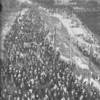
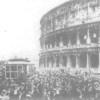
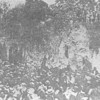
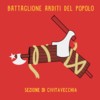

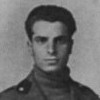
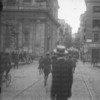
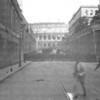
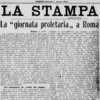
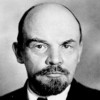
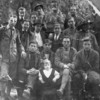
In autumn 1921 the Arditi
del Popolo underwent very hard blows by the repression of the
Bonomi government, and of the fascist gangs, which instead were
tolerated, or even supported by the police. The number of Arditi
del Popolo was reduced to one third, while in Rome their ranks
were halved. On October 8th, 1921, the police headquarters
in Rome ordered Cencio Baldazzi, as a member of the Executive
Board, to communicate to the Arditi del Popolo their dissolution,
considering since then they were a criminal organisation. Lacking
any locations, the Arditi del Popolo gathered in political parties'
offices or in private houses: the membership recruitment of rione
Ponte district battalion took place at home of the Republican
militant Bartolomeo Cavallini. (Gentili, 2009)
At the end of 1921 the Arditi del Popolo ranks had been so much
reduced, that they disappeared in 1922, with the taking of power
by the fascism.
The decline of the Arditi del Popolo was also due to the hostility
of the left-wing parties, as the Socialist Party, who had signed
with the fascists a "pacification agreement",
and as the Communist Party of Italy who, under the leadership
of Amadeo Bordiga, preferred to entrust
their home squads the military defense of the anti-fascist fight.
Antonio Gramsci, instead, in a more
forward-looking way, supported a greater openness towards the
Arditi del Popolo, defining them: "the first effort of
a workers' comeback against the reactionary hordes",
and Palmiro Togliatti, in 1935,
maintained that the Arditi del Popolo had had "a fundamental
political importance", defining the lack of support given
to them as "a major mistake". (Gentili, 2009, pag. 147, 155,
156)
Aldo Eluisi also participated
in the founding of the antifascist squads, as a commander of one
of the ten city battalions, that of rione Ponte district, together
with his equal in age Vincenzo (Cencio)
Baldazzi, which became his companion of struggle during the
Resistenza against fascism.
Antifascist
militancy
In the early 1920's
Aldo Eluisi took part in many clashes with the fascists in Rome,
then he was repeatedly filed by the police headquarters in Rome.
He was first arrested on August 20th, 1921 and once more the following
year, "for assaults against fascists". (Gentili, 2009,
pag. 189) As told
by his brother Bruno, twenty years younger, Aldo was brought to
the police station on the occasion of any minimum event, as indeed
happened to many other anti-fascists, and his mother had to rush
there to try to get him released. (Portelli)
Between 7th and 11th
November, 1921 at the Augusteo in Rome, the founding congress
of the National Fascist Party was held, and the fascist gangs
carried out provocation and bullying, including the assault on
workers and anti-fascists quarters of San Lorenzo and Trionfale.
The reaction of the Roman anti-fascists and of the inhabitants
of the districts, was very determined and also made use of weapons.
On November 9th Aldo, with a group of comrades,
in piazza Zanardelli (officially
"piazza di Ponte Umberto I"), on the Tiber river
embankments, opposite via Zanardelli, near his home, faced the
royal guards and then the fascists, whose retreat was protected
by the guards, while Baldazzi and others took advantage of the
turmoil to deal the fascists a bunch of blows. Baldazzi himself
describes the episode in his diary:
"While the fascists were forced to leave Rome, pursued
by our troops commanded by Comrade Aldo Eluisi [...] and by our
intrepid comrade Gallinella [...], I lined up with numerous forces
between Margherita Bridge and the Tiber embankments. The royal
guards cavalry blockaded Zanardelli square in order to prevent
the junction of the Arditi del Popolo which were divided. Suddenly
Eluisi threw a firecracker that fell close to the cavalry cordon,
causing a stampede of horses and cavalrymen. So we were able to
join the other squad, easily overcoming the security forces' blockade,
then we reached the fascists and dealt them a bunch of blows "
(Gentili,
2009).
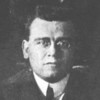
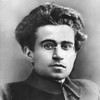
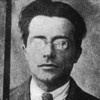
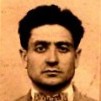
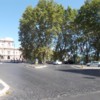
The same facts occurred
again on April 21st, 1922, at the regional fascist
conference of Lazio, and Aldo Eluisi stood out for his effectiveness
in fighting the fascists. (Gentili, 2009) The
fascists tried again to attack San Lorenzo on May 24th,
1922, on the occasion of the return of the body of hero of war
Enrico Toti, under the protection of the army
and the police, but they were once again repelled by the Roman
anti-fascists, sustaining casualties. (Francescangeli)
On 28th
October 1922, with the "March on Rome", the fascists
took the power, triggering in various parts of Italy the anti-fascists'
reaction. At the Roman Castles, a hill country area in the neighborhood
of Rome, as reported by an inspector dispatched on-site by the
Roman fascist headquarters, on November 21st,
1922, two battalion commanders of the Arditi del Popolo, coming
from Rome, shot against some fascists. They were Vincenzo Baldazzi
and Arduino Aloisi, who might actually been Aldo Eluisi, given
its proximity to Baldazzi. (Gentili, 2009, pag. 196)
Aldo was arrested
again in November 1922, during a vast operation of the Roman police
that led to the capture of dozens anti-fascist activists and trade
unionists, and in particular many Arditi del Popolo, On August
3rd, 1923, in Piazza Fiammetta, he was attacked
by a group of fascists and hit by two stab wounds in the back.
The Italian-American newspaper "Il Risveglio"
("The Awakening") reports the news (read
it, in Italian), while another article, entitled "Stabs
to those who refuse obedience" says: "Last night
a militia patrol that doesn't seem very effective in his task
of maintaining the order, entered the Trattoria Masseroni restaurant
in Piazza Fiammetta ordering everyone to show their documents.
Someone pointed out that if you go from home to the tavern usually
don't take your passport with you [...] . Even more so since the
patrons were quietly drinking without disturbing the public order
for this. The militiamen wanted to search all the persons there,
despite their protests. One of them, a certain Aldo Eluisi - seems
to have refused to undergo the prevarication and this triggered
a brawl. Conclusion: Eluisi got two stab wounds and is now in
a hospital. Please allow us to observe that stabbing those who
refuse obedience [...] is at least exaggerated, and that a knife
doesn't seem the best weapon for a militia that claims to be the
proud holder of the title <<national>>".
(Gentili,
2009)
With the taking of power by the fascism, Aldo continued his fight
in a covert way. In 1926, together with Errico
Malatesta, Cencio Baldazzi and Attilio Paolinelli he planned
an action to free, on the day of his trial, Gino
Lucetti, who on September 11th had carried out an attack to
the life of Mussolini, but the police thwarted the plan and arrested
Baldazzi.
Eluisi was arrested in 1928 for the possession of a firearm, and
in 1930, he was accused of having caused "turmoil among
the Arditi", and was warned from carrying out prohibited
activities by the FNAI, the fascist association of Arditi. In
1931 he was required to get an identity card. (Gentili, 2009, pag. 189) Despite his political position
close to anarchism, he joined the Partito
d'Azione (Action Party), whose leaders shared with the anarchists
the anti-fascist and anti-Stalinist ideas. This affinity got stronger
during the Spanish Civil War.
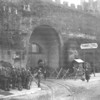
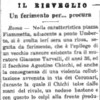
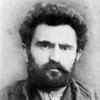
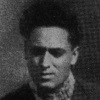
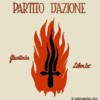
Aldo Eluisi
in the Resistenza
After the armistice
of September 8th, 1943, Aldo took part in the
first battles against the Nazis at Porta
San Paolo, at Madonna del Riposo, on the Aurelia way, and
at San Giovanni, where, together with Cencio Baldazzi, Mario Chierici
and Vittorio Butteroni, he seized a truckload of weapons, distributing
them to the fighters. At Porta San Paolo Raffaele
Persichetti died, he was also a member of the Action Party,
and dwelt at corso Rinascimento,
two hundred meters from Aldo (see the plaque).
Aldo took part in the constitution of a local group of "Giustizia e Libertà"
("Justice and Freedom") movement, supervised
by Cencio Baldazzi, which saw among its members a huge group of
anarchist partisans; he also acted as a battalion commander of
rione Ponte district, with the same rank of a captain.
Pursued by a warrant of arrest since November 1943, Aldo was captured
by the fascists, but he managed to escape and resume the fight.
On March 2nd, 1944, during an anti-fascist
meeting he fell into a trap set by an informer; Aldo attacked
him, and tried to escape, but was wounded and captured by the
fascist gang banda Koch when he found himself cornered in a blind
alley, in via Leccesa, near via di Ripetta.
Aldo was detained by the butchers of the Koch gang, he was tortured
for 18 days in the pensione Oltremare
boarding house, at via Principe Amedeo, 2, then in via
Tasso jail, but he never gave any information on his comrades.
At via Tasso he shared the same cell with Pilo
Albertelli.
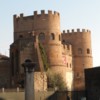
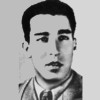
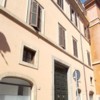
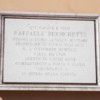
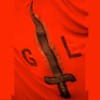
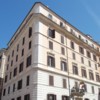
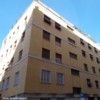
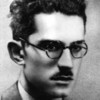
His sister in law, who
could visit him because she knew one of the prison guards, tells
he always had a sheet to cover his hands, not to show that his
nails had been torn and that he had been hung by his arms; They
also hit him in his chest with their rifle stocks. (Portelli)
Aldo was killed at
the Fosse Ardeatine on
March 24th, 1944, his name was number 16
on the list prepared by the fascist police commissioner of Rome
Caruso, in which the partisans of Giustizia e Libertà were
at the first places and Aldo was among those "At the disposal
of the Central Police Station, arrested for political reasons".
Aldo's family learned of his death when, the next morning, his
sister in law, reaching the jail in order to visit him, was sent
back home by the prison guard she knew, who told her that Aldo
had been carried away in the night. As a partial consolation,
the guard told her that probably he would not have suffered, because
he was already dying by the torture he underwent. (Portelli)
Aldo Eluisi is buried in tomb no.
182 of the mausoleum built
at Fosse Ardeatine on the site of the massacre, along with the
other victims.
The motivation
of the gold medal for military valor
In 1947, following
a proposal of the local committee of National Partisans Association
(ANPI), Aldo was posthumously awarded
the gold medal for military valor, with the following motivation:
"Commander of an Arditi del Popolo squad he valiantly
fought at Porta San Paolo and at Madonna del Riposo putting the
enemy to flight. Pursued and arrested by the nazi and fascist
police he could boldly elude the vigilance and gain freedom to
resume his place in the struggle. Betrayed by a vile informer
and surprised during a meeting with other partisans, after a harsh
scuffle he was immobilized and, though being wounded, he was carried
in the torture chamber where his ordeal began. For eighteen days
he suffered the most brutal torture and the slaughter of his body;
he was taken to the Fosse Ardeatine where he joined in death the
other heroes who have soaked with their blood the soil who became
sacred to our homeland. Fosse Ardeatine, March 24th,
1944" (link).
The character
of Aldo Eluisi
Alberto Baldazzi tells
about him: "He was a man of few words, but he was some
testy, if a German was glaring at him, he went there and hit him".
Moreover his brother Bruno tells: "... he was like that.
His friends said, you can't quite go to the movies with Aldo!
Because if at a certain moment they play the fascist hymn Giovinezza,
anybody stand up and he doesn't, it's enough to start a brawl.
... Actually, he simply couldn't stand the dictatorship and it
was enough. Sometimes he was quite pursuing the fascists, he went
to Aragno cafe at via del Corso,
he was pursuing them for what they had done to him, they had stabbed
him. (Portelli)
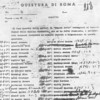
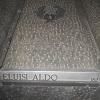
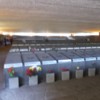

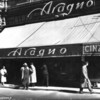
Memory
A street was named
after Aldo Eluisi in Rome in Tor de Cenci district. On March 5th,
1945 Aldo was commemorated at Altieri cinema, on the initiative
of the Action Party. The "Giustizia
e Libertà" local branch of Rome (link),
via Andrea Doria, founded in 1948, among others by Emilio
Lussu and Cencio Baldazzi, in the same building where the
anarchist Errico Malatesta lived,
keeps a bronze bust of Aldo
Eluisi, made in 1945 by the sculptor Amleto Rossi, "Roman
sculptor and marble worker", at San Lorenzo, a former
Ardito del Popolo and later Partisan.
The bust was unveiled during a commemoration of Aldo Eluisi, "antifascist
martyr", held by Rome's Action Party, on March 18th,
1945, the anniversary of the Paris Commune, and less than a year
after the massacre of the Fosse Ardeatine, and bears on its plinth
an epigraph saying: "The Arditi of 1922 / the partisans
of 1944 / that moved from Piazza Zanardelli /for the liberation
of free men / today / at the beginning of the redemption /
commemorate the commander / who had / action as a plan / freedom
as a faith". For the occasion Federico Comandini delivered
a vibrant speech.
Again in Rome, on the ramparts of Piazza
Pia, near St. Peter's Basilica, in 1945 a plaque
commemorating thirty of the Roman victims belonging to the Party
of Action Resistance, including Aldo Eluisi. was placed.
Many people thought of Aldo in the 1970s, when the Supreme Military
Court was discussing the application for release of the only one
of the executioners of the Fosse Ardeatine who was then held in
custody. The court is located in a building in Via degli Acquasparta,
in a square that is one and
the same with piazza Fiammetta, where Aldo Eluisi lived. (Portelli)
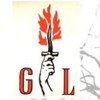
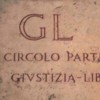
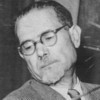
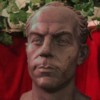
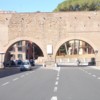
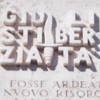
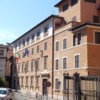
Bibliography:
AA.VV.
(1978) Quaderni della Resistenza laziale, n. 8. Regione Lazio,
Stilgraf, Roma.
ASCARELLI Attilio (1965) Le Fosse Ardeatine. Canesi, Roma.
BALSAMINI Luigi (2002) Gli Arditi del Popolo. Galzerano Editore,
Casalvelino Scalo (SA)
CORVISIERI Silverio (2005) Bandiera rossa nella resistenza romana.
Odradek, Roma.
D'AGUANNO Claudio (2004) Un magma resistente. www.fisicamente.net
link
FRANCESCANGELI Eros (2000) Arditi del Popolo. Odradek, Roma.
GENTILI Valerio (2009) La legione romana degli Arditi del
Popolo. Purple Press, Roma.
GENTILI Valerio (2010) Roma combattente. Dal "biennio
rosso" agli Arditi del Popolo. Castelvecchi, Roma.
GLIELMI Alessia A. (2020) Il corpo e il nome. Inventario della
Commissione tecnica medico-legale per l’identificazione delle
vittime delle Fosse Ardeatine (1944-1963). Viella, Rome, Italy.
webpage
GRELLA Pasquale
(1987) Appunti per la storia del movimento anarchico romano dalle
origini al 1946. De Vittoria, Roma
Info.Shop "laTalpa" (2014) Storie da una Roma sovversiva
- 11 settembre 1926: L'attentato al duce. 11 set 2014 link
LIPAROTO Andrea (2004) Gli Arditi del Popolo. Patria Indipendente,
23 maggio 2004, pagg. 26-28.
PORTELLI Alessandro (2012) L'ordine è già stato
eseguito. Feltrinelli, Milano.
ROSSI Marco (2007) Una storia romana: gli Arditi del Popolo. Incontro:
“Due giorni contro i Fascismi”, Roma, 4-5 maggio
link
S.A. (1921) La "giornata proletaria" a Roma. La Stampa,
7 luglio.
S.A. (1923) Un ferimento per ... procura. Il Risveglio - Italian
Weekly Newspaper. Dunkirk, NY, USA, 4 agosto link
SPRIANO Paolo (1967) Storia del Partito Comunista Italiano. 1.
Da Bordiga a Gramsci, Giulio Einaudi editore, Torino.
TROISIO Armando (2014) Roma sotto il terrore nazista. Castelvecchi.
ZANI Luciano (1975) Italia Libera. Il primo movimento antifascista
clandestino (1923-1925). Laterza, Roma-Bari.

Websites visited:
ANFIM
- Associazione nazionale famiglie italiane martiri caduti per
la libertà della patria link
ANPI -
Donne e Uomini della Resistenza link
ANPI - Fosse Ardeatine link
BFS - Biblioteca Franco Serantini - busto di Aldo Eluisi link
BFS - Biblioteca Franco Serantini - lapide di piazza Pia link
Circolo Giustizia e Libertà - Roma link
Dictionnaire des militants anarchistes - item "Aldo Eluisi"
(in French) link
Italian Presidency of the Republic - motivation of the gold medal
for military valor (in Italian) link
Fosse Ardeatine Mausoleum link
Resistenzaitaliana.it link
Wikipedia - item "Aldo Eluisi" (in Italian) link
Sobre la anarquía y otros temas - Romeo Frezzi (vida y
obra) 14 agosto 2018 (in Spanish) link
 page
created: July
23rd 2015 and last updated:
May
1st, 2024
page
created: July
23rd 2015 and last updated:
May
1st, 2024